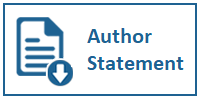Analisa Faktor-Faktor Yang Mempengaruhi Penggunaan E-Filing Wajib Pajak Orang Pribadi
Case Study of Individual Taxpayers Domiciled in Tangerang
DOI:
https://doi.org/10.31937/akuntansi.v9i2.727Abstract
The objective of this research was to examine the effect of perceived usefulness, perceived ease of use, satisfaction, security and privacy, and taxpayers readiness of information technology toward e-Filing usage. The main purpose of e-Filing implementation was to improve services to the public by facilitating the reporting of SPT electronically through the internet to the taxpayer. The object of this research was individual taxpayers in Tangerang City. The selection of the sample was determined based on convenience sampling method. Data used in this study was primary data. The respondent in this study were 160 individual taxpayers. Data analysis technique in this research was using multiple linier regression. The result of this study were (1) perceived usefulness had significant effect to e-Filing usage; (2) perceived ease of use had significant effect to e-Filing usage; (3) satisfaction had significant effect to e-Filing usage; (4) security and privacy had no effect to e-Filing usage; (5) taxpayers readiness of information technology had significant effect to e-Filing usage. Furthermore, perceived usefulness, perceived ease of use, satisfaction, security and privacy, and taxpayers readiness of information technology had influence simultaneously to e-Filing usage.
Keywords: e-Filing usage, perceived ease of use, perceived usefulness, satisfaction, security and privacy, taxpayers readiness of information technology.
Downloads
Downloads
Published
How to Cite
Issue
Section
License
Authors retain copyright and grant the journal right of first publication with the work simultaneously licensed under a Creative Commons Attribution-ShareAlike International License (CC-BY-SA 4.0) that allows others to share the work with an acknowledgement of the work's authorship and initial publication in this journal.
Authors are able to enter into separate, additional contractual arrangements for the non-exclusive distribution of the journal's published version of the work (e.g., post it to an institutional repository or publish it in a book), with an acknowledgement of its initial publication in this journal.















